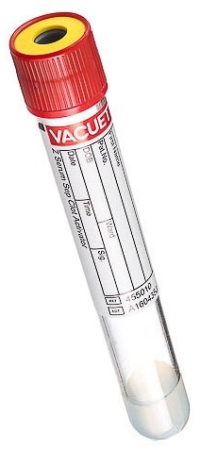
Test Code: 34429
CPT Code(s): 84481
Methodology: Immunoassay (IA)
Clinical Significance: T3, Free - The T3, Free (FT3) test measures serum triiodothyronine (T3) not bound to thyroid hormone-binding proteins (thyroid hormone-binding globulin [TBG], transthyretin, albumin). It is used, primarily in concert with measurement of thyroid-stimulating hormone (TSH, test code 899) and free T4 (FT4, test code 866), in the diagnosis and management of hyperthyroidism and to clarify thyroid hormone status in the presence of a possible thyroid hormone-binding protein abnormality.
The FT3 (or total T3) test is usually ordered following an abnormally low TSH result and/or a clinical picture suggestive of hyperthyroidism, particularly if the free T4 test (FT4, test code 899) result is not elevated. Up to 10% of patients with proven hyperthyroidism (due to Graves disease or an autonomously secreting thyroid nodule) may have an elevated FT3 but normal FT4 (T3 toxicosis), particularly early in the course of disease or as an early sign of relapse after treatment [1]. In contrast, there is limited utility for FT3 testing for suspected hypothyroidism as FT3 levels may not drop until well after both TSH and FT4 rise [2].
Additional names: Free T3
Supply: #T157 Red/Yellow SST 8mL
Preferred Specimen Requirements: Serum
Preferred Volume: 1mL
Container Type: Serum Separator tube (SST)
Transport Temperature: Room Temperature
Specimen Stability: Room Temperature: 7 days
Reject due:
- Hemolysis
- What are hemolyzed specimens?
- Hemolysis occurs when the red cells are damaged during sample collection causing them to rupture. Hemolyzed serum or plasma is pale pink to red rather than the normal clear straw or pale-yellow color.
- What causes a specimen to be hemolyzed?
- Mixing tubes too vigorously
- Placing tubes in the refrigerator without allowing 30 minutes at room temperature for complete clotting
- Exposure to heat or in a refrigerator that is too cold
- Using a needle with too small of a bore necessary for the venipuncture
- Using too large a tube when using a butterfly needle
- Not allowing sufficient time for alcohol to dry on puncture site
- Leaving the tourniquet on for longer than one minute
- How can hemolyzed specimens be prevented?
- For routine collections, use a 20–22-gauge needle
- Do not remove the needle from the vein with the vacuum tube engaged
- Do not collect a specimen in a hematoma
- Do not centrifuge the specimen for a prolonged period of time
- Draw the sample gently and evenly
- What are hemolyzed specimens?
- Specimens exceeding stability
- Specimens other than serum
- Unlabeled or improperly labeled specimens
For additional supply or collection information, please contact DLO's Customer Service at (800) 891-2917, option 2.
The CPT codes provided are based on AMA guidelines and are for informational purposes only. CPT coding is the sole responsibility of the billing party. Please direct any questions regarding coding to the payor being billed.
